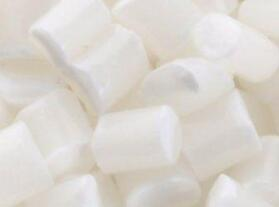Acrylonitrile Butadiene Styrene often referred to as abs plastic raw materials is a type of plastic that is an opaque thermoplastic and an amorphous polymer. When we say thermoplastic, we mean that this type of plastic responds to heat in different manners. In the case of ABS, this plastic becomes liquid when it is subjected to 221 Fahrenheit degrees. What sets thermoplastics apart from other plastics is that they can be melted to their liquid form, cooled, and again reheated without causing too much damage to their chemical composition. So abs plastic raw materials do not burn, it merely melt and turns into a liquid form. Once cooled, it goes back to its solid state again. A thermoplastic like ABS is better than thermoset plastics because thermoset plastics can only be heated once (typically during the time it is being molded into a particular form).
When thermoset plastics are heated, they undergo a chemical change that cannot be reversed. This is why they can’t be melted over and over again like thermoplastics. When one tries to heat up thermoset plastics, instead of melting, they end up burning, unlike thermoplastics which can become liquid again and can be remolded.
This property of being able to reheat ABS over and over again makes it such an awesome candidate for recycling.
 How is ABS plastic made? The emulsion is one of the main processes that aid the making of abs plastic raw materials. The process of emulsifying can be simply described as mixing multiple materials that don’t particularly mix but come together as one single product. ABS undergoes a patented process called continuous mass polymerization. Once this process is done, we get ABS. It is the ideal plastic candidate for recycling and creating new products from old ABS plastics.
|
 How and where is ABS used? Since ABS is a very resilient plastic and does not corrode easily when it comes in contact with abrasive materials, ABS is often used for 3D printing purposes, keyboards of computers, lego toys, power tool housing, wall sockets, computer parts, automotive parts, luggage cases, aircraft applications, helmets, chairs, tables, containers, etc. The applications of ABS are limitless! One of the reasons why ABS is so widely used is because it is also a cheap plastic. ABS should not be used in items that are subjected to high heat because it has a low melting point as compared to other plastics. This plastic is opaque and can be colored by different pigments with great ease. Once cooled, ABS gives a smooth and glossy finish.
|
 Is ABS plastic raw materials a toxic material? No, ABS is not a toxic material. It is used in many children’s toys because it is relatively less harmful when you compare it to other plastics. It does not have any known carcinogens and there have not been any severe health defects related to ABS so far. But with that being said, ABS is not used for medical implants and any other such medical purposes.
|














